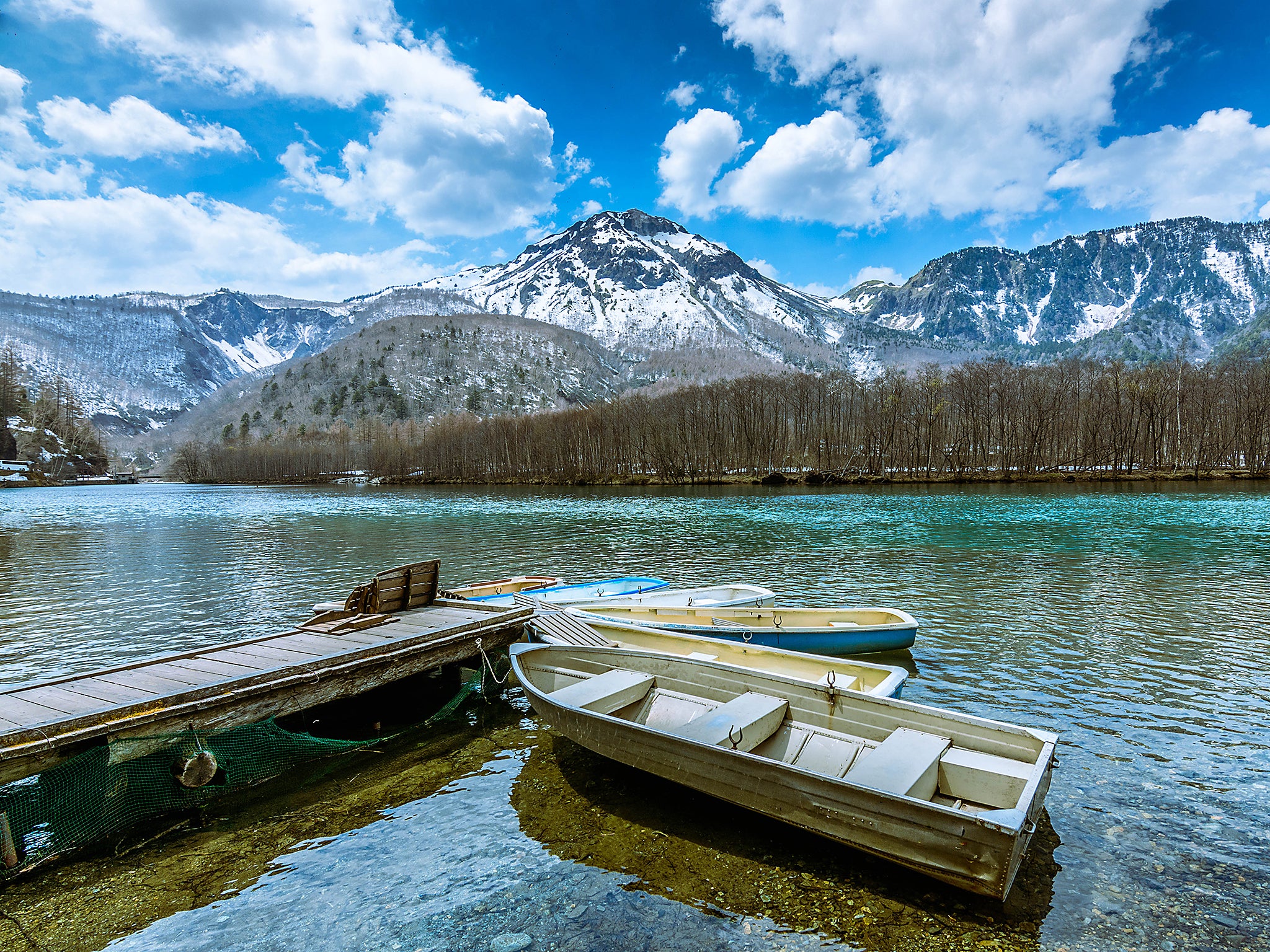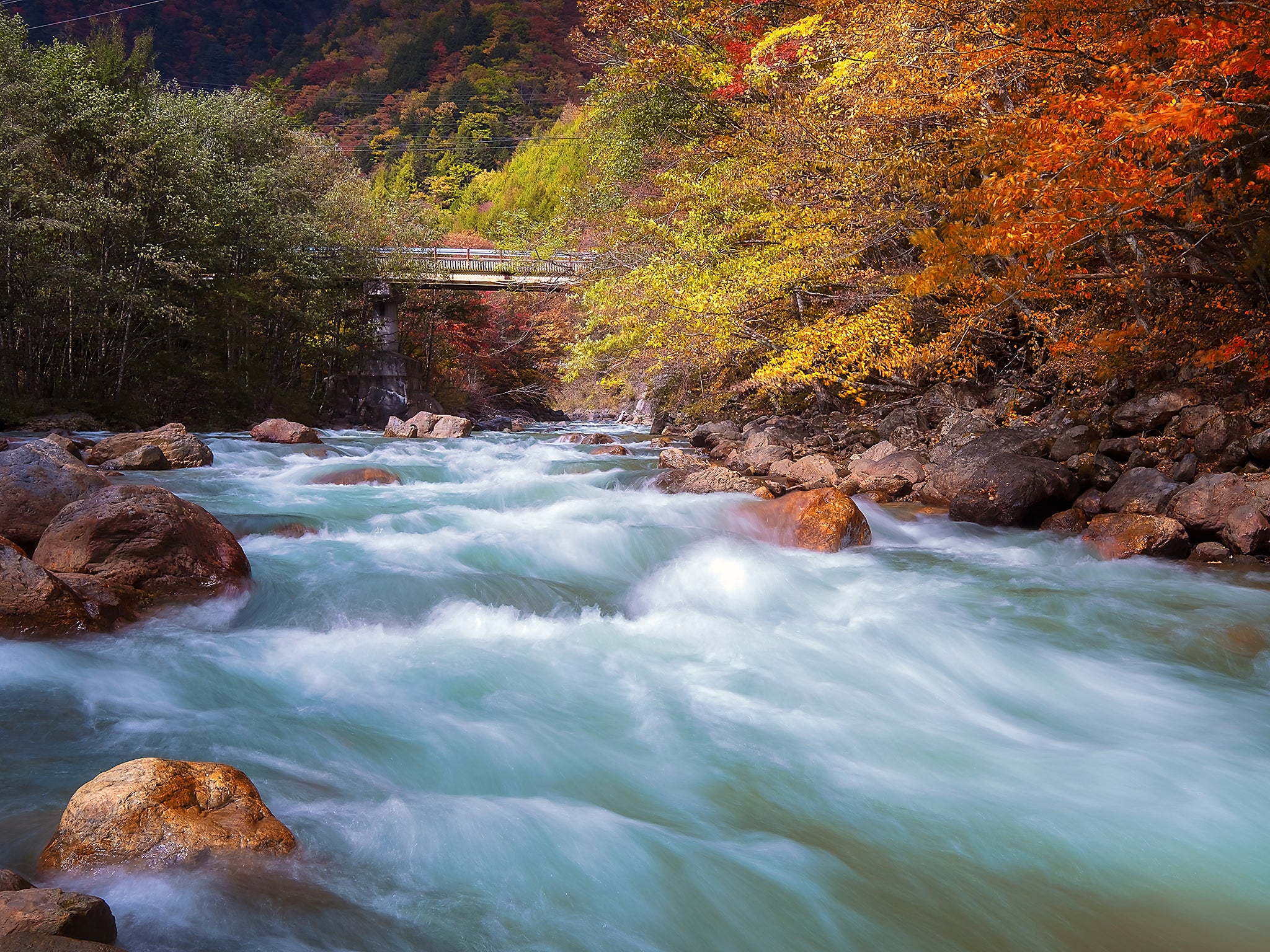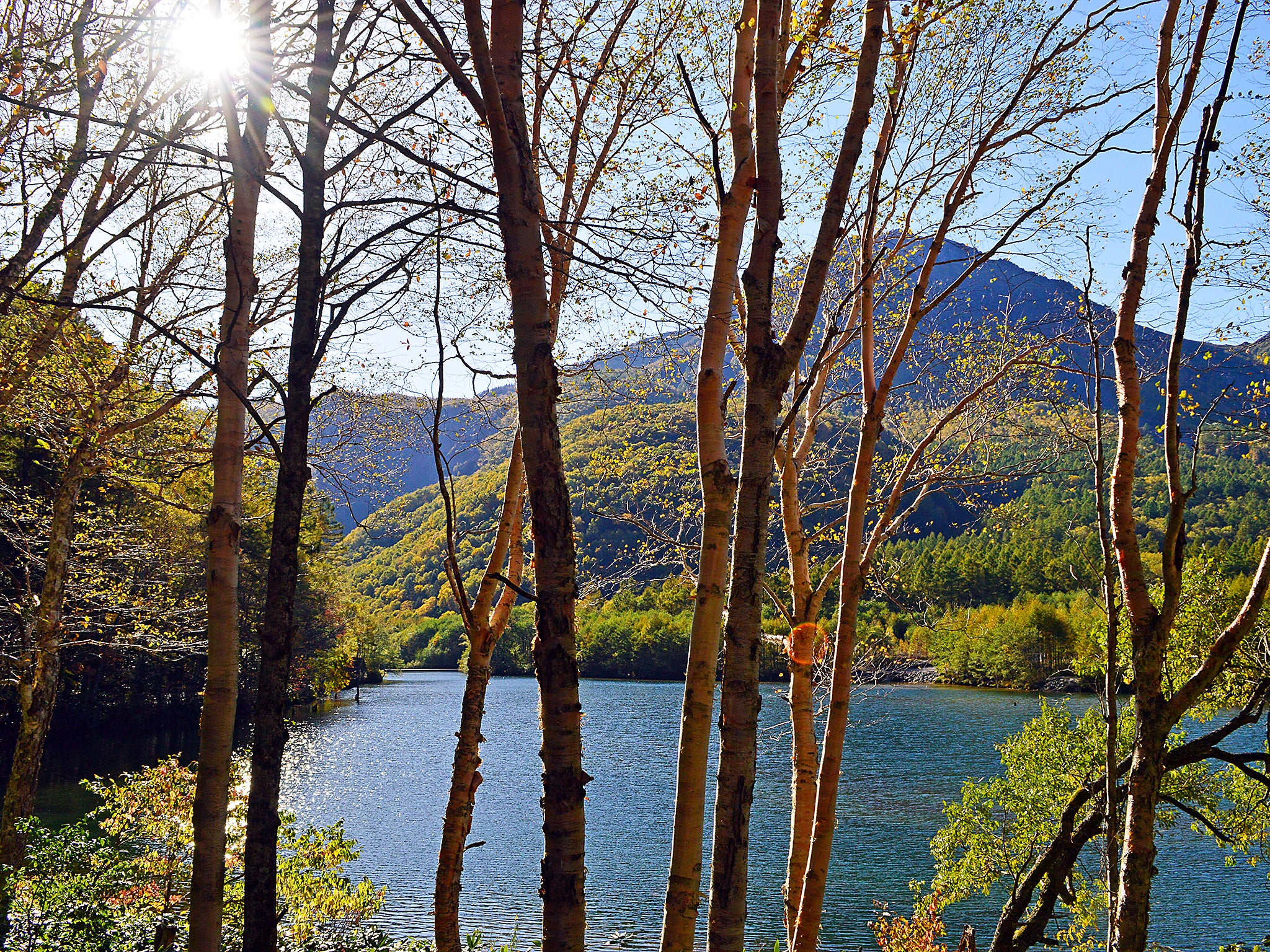The Independent's journalism is supported by our readers. When you purchase through links on our site, we may earn commission.
Escaping Japan’s super-cities for the ‘so-called wilderness’
In a country with a word – ‘karoshi’ – for death by overwork, it’s no wonder the charms of the wild, and even not-so-wild, are a magnet for city-dwellers

Every country should have its Shangri-la. Perhaps this is Japan’s. The highland Eden of Kamikochi – 3,000 feet above sea level and tucked into the Nagano prefecture in the centre of Honshu, Japan’s main island – attracts millions every year. They come to sniff the air and escape the humidity of a Japanese lowlands summer. Cool, green larch woods flank the slight but lively river Azusa that plunges through precipitous granite known in Japanese as “the mountains of the standing ears of corn”.
So pristine are Kamikochi’s habitats that access has to be limited by banning private cars and coaches. That doesn’t stop thousands of visitors arriving each day to walk its gentle, narrow trails. Everywhere it glows with the bright colours of hikers in Lycra; there’s little room to breathe.
Crowds are inevitable. Japan’s 127 million-strong population is crammed largely into super-cities: greater Tokyo has 38 million residents. Much of its hinterlands have been ruthlessly cemented, blasted and laid waste to by a combination of apathy and bad planning. What’s left is a mountainous countryside – 80 per cent of Japan is valleys and hills – often either too steep to explore or filled with dam water. So, with near 90 per cent humidity in August and little in the way of appealing country retreats close by, unspoiled Kamikochi is the go-to destination for Tokyoites.
I joined them in late August, my visit coinciding with Obon, an ancestor-worship festival that briefly unchains city-dwellers from their desks and gives them the chance to reboot family ties. For others, it’s simply a chance to escape the boiling city. Either way, the middle-aged Japanese couple sitting next to me on the shuttle bus – other than taxis, this is the only way into the park – feel that Kamikochi “is just the ticket.” They live in Osaka, a city famous for its food and warm character but not its good looks.
“Kamikochi is so beautiful,” they gush. But would they live here? “Well, maybe in the summer. Osaka is so hot! In winter, we’d have to hightail it back to the city.” Well, this landlocked part of the world is, for the most part, deeply frozen in winter. Yet a survey last year showed that the countryside of Nagano is where urban Japanese would most like to move to.

Why? “It has a lot to do with this region’s proximity to the big conurbations on the Kanto and Kansai plains,” says a spokeswoman for the Furusato Kaiki Shien Centre in Tokyo, a charity encouraging relocation from cities to the countryside. Depopulation of the countryside and its so-called “shutter towns” – miserable and abandoned places where shops have their shutters permanently down – is a persistent problem across Japan.
Those in their twenties are keenest to leave Tokyo, but that’s still a tough option, at least according to some who make the move. It’s hard to find somewhere to live, too, according to Ken Yamaguchi, owner of the Northstar, a ski lodge to the south of Kamikochi. “Locals only really rent to those they know and trust,” he says. It took him three years to find a home after he decided to leave his job as a social worker in Tokyo for what he sees as the benefits of rural life. “Here is marvellous for kids. We have tiny school, with 30 students per year” – in Tokyo, the average class size is about 50.
His offspring may not thank him for bringing them to a wilderness filled with black bears: frequent signs on the trails warn of their danger, and hikers are advised to wear bells, whose tinkling is supposed to scare bears off. But then wildness, or at least the appearance of it, is the region’s strength. There are few of the conbinis, all-purpose convenience stores dotted across the Japanese landscape, and there is less of the concrete blight that characterises much of rural Japan. Kamikochi and the Nagano national park, unlike the rest of the country, have been appropriately zoned, and the buildings, few that there are, tend toward the sympathetic; referencing Japan’s aesthetic past, they are built with cypress wood that scents the air.

The lack of buildings has another effect. Accommodation in the valley is expensive, though around its rim are plenty of onsen, hotels with spas that tap into the region’s volcanic waters. A few have rotemburo, open-air baths hewn out of rock. At others, such as Shirahone Onsen to the south of Kamikochi, visitors are encouraged to drink the water. Silky with sediment, it tastes primal: mud and earth, with more than a touch of the chemistry set.
After the soaking and sipping comes the hiking. And the crowds, tramping the paved paths that run along the pebbly Azusa, their bear bells tinkling. In the forests beyond, light filters down through the leaves, Japanese bush warblers call from their hiding places in the dwarf bamboo, the air is green and sweet, and you can begin to believe the local translation of Kamikochi as “where the gods descended.”
Wandering off-piste is not tolerated at Kamikochi, though its biddable guests seem happy to comply. “This is perhaps how the Japanese have come to experience nature,” says Shawn McGlynn, a friendly young biologist from Montana, whom I meet over breakfast at the Northstar. “But it feels weird walking on a paved road in a so-called wilderness.” Without much access to the wild, the Japanese have come to prefer an ordered, safe version of it – the sting removed, tidy, pleasant and unchallenging.
Wild or not, Kamikochi and Nagano retain a magnetism for the Japanese. Perhaps the lesson for the rest of rural Japan, suffering under its concrete cloak, is that its greatest assets are traditional houses and what could be an unforgettable landscape. If the rump of the countryside took some leaves out of Kamikochi’s books, the madding crowd, given more choice, could give its overburdened byways a breather. And maybe get off the path.
© Newsweek
Join our commenting forum
Join thought-provoking conversations, follow other Independent readers and see their replies
Comments
Bookmark popover
Removed from bookmarks